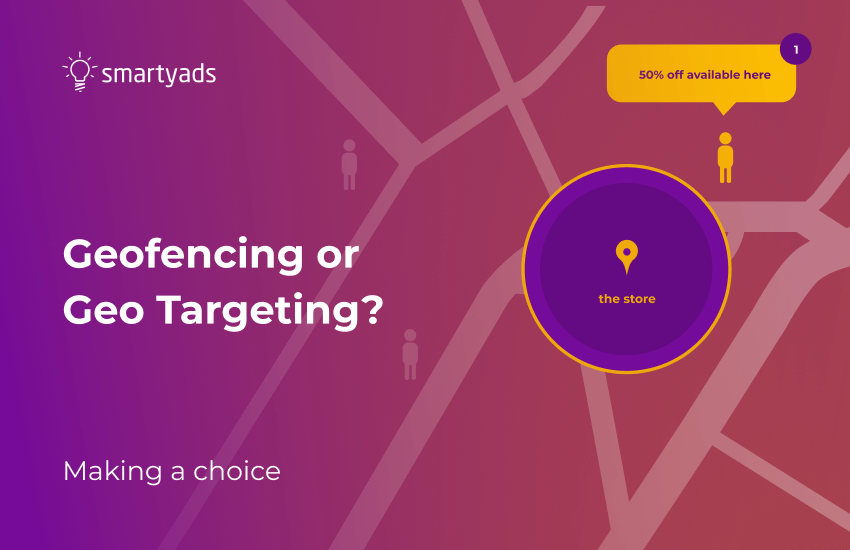
Location data is being used by marketers more and more to create successful campaigns. According to a poll, 83% of marketers said that advertisements employing location data were more successful.
Companies are using a variety of targeting tactics in the current digital marketing environment to better tailor content to their end consumers. Consider the advantages location-based targeting could offer for your campaigns if it isn’t already a part of your marketing strategy.
Geotargeting, which is a general term for location-based targeting, can take many different forms.
Both the main functioning of an app and the advertising and marketing plan for your mobile app might be based on location data.
Describe Geotargeting.
Geographic consumer targeting or location-based marketing are both collective terms for geotargeting. This phrase typically describes dividing up your audience into geographically specific groups and sending them more targeted marketing or advertising efforts from your company. By using this method, you may avoid providing irrelevant information to people in areas where a particular campaign is less likely to be effective while simultaneously meeting local users with hyper-relevant content.
Basic geotargeting involves determining a user’s country of residence based on their IP address. By using data filters or segments, for example, this can be set up.
For example, you could advertise a promotion to a user with a geotargeted push notification based on where in their region your fast food restaurant is located. Based on regional products and cultural tastes, your menu varies depending on the country you do business in. Based on the location information you gather about your user base, you may geotarget consumers in each country with cross-channel advertising campaigns that are specific to that area and promote these locally designed items.
For instance, a user in Spain might get a string of push and email messages promoting drinks you’ve created with a forthcoming El Clasico theme.
Your American users, on the other hand, might get a distinct set of messages tailored to your Super Bowl-themed beverage promotion.
An individual’s IP address, which can pinpoint their location to a certain general area like a zip code, is typically used for geotargeting. You can also include other user data in your geotargeting segmentation plan, such as preferences, behaviours, and activity. Geotargeting segments frequently use additional criteria in this manner.
Guidelines for the Best Location Data Collection
You must be familiar with both Android and iOS standards if you want to collect location information through your app. If you want to employ geotargeting in your messaging campaigns, you need stay up to date on the most recent privacy advances since location permissions are a hot topic in the mobile app market.
Android
The Android framework has a variety of use cases, each with unique requirements.
Android divides its permissions into front and background locations as well as precise and approximative locations in its documentation.
If your programme only uses location once, such as to give your navigation app one set of directions, foreground location is important. You must have access to a user’s background location in order to use the Geofencing API.
Even if some of the functionalities of your app could need location permission, it’s probable that most of them won’t need background location access. In order to avoid asking for all of these location permissions at once, your app may gradually work up to requesting background location. By doing this, users can continue to feel in control of their data and take the time to comprehend why your app requires these rights in order to work before consenting to share their background location.
iOS
Apps on iOS can use location data from cellular, wifi, GPS, and Bluetooth to determine where users are. The first time you access a user’s location, your apps must explicitly ask for their consent before tracking their whereabouts.
Some iOS apps will only use location when they are running in the foreground. A blue pill in the status bar of the phone indicates that others will continue to utilise location when they are in the background.
An app may ask for background authorization after receiving “While in Use” permission from users. The iOS device will frequently notify you that an app is tracking your location if you grant it permission to do so in the background. It will then ask for your continuous consent to do so.
If users are worried about their whereabouts being recorded, they can also turn off location services in their privacy settings.
Making a Location Permission Request Through Mok.one In-App Messages
It is best to explain to users why location tracking is advised when asking for their consent. Usually, people won’t divulge their whereabouts without a strong reason. Consumers today are concerned about their privacy and want to know how their data is tracked. As a result, you should outline how you plan to use their location data and any additional features that sharing it will make possible.
Consider the timing of your request because users might be cautious or concerned about location monitoring. If you run a fitness app, for instance, that uses location to help users track their runs and walks, you might use in-app messaging to persuade users to accept auto-tracking both when they first sign up and later on in their user lifetime.
Start using Mok.one
Mok.one is made to assist you in managing user communication across a variety of channels, including email, in-app chat, bulk SMS, and push notifications for mobile and web. Our platform is simple to set up and makes it simple to send messages that are visually appealing without having to do any coding effort. If you don’t already have one, you can sign up for Mok.one for no cost and start notifying your users of updates right away. Sign up now and see for yourself, don’t take our word for it!